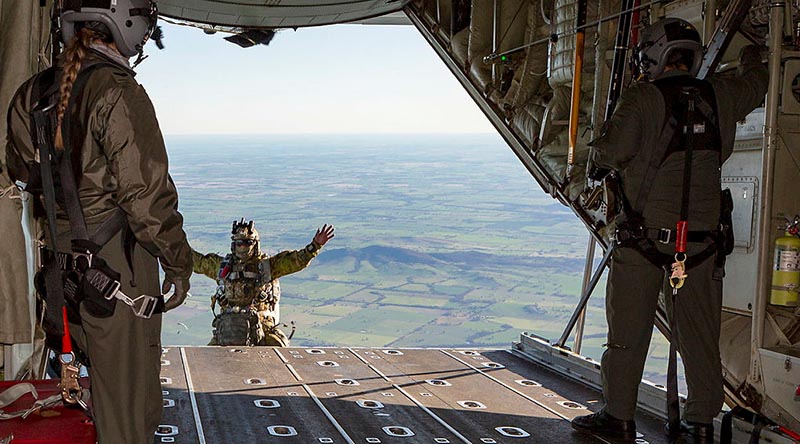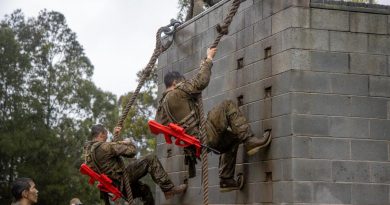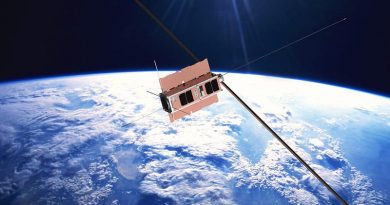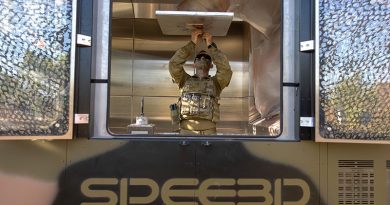Combat controllers drop havoc on Wagga Wagga

Combat controllers from the Royal Australian Air Force’s No. 4 Squadron chose RAAF Base Wagga for their annual parachute continuation training.
CAPTION: An Air Force Combat Controller, from No.4 Squadron, jumps off the ramp of a C-130J Hercules for a training mission during Exercise Havoc Drop. Photo by Corporal Dan Pinhorn. Story by Flight Lieutenant Alyssa Vickridge.
RELATED STORY: Combat controllers cause havoc on the range
Designed to test the abilities and proficiencies of the combat control teams in core airpower roles, Exercise Havoc Drop 20-1 took place from 13 to 17 July.
No. 4 Squadron B Flight Commander Squadron Leader C said the exercise was about developing the controllers parachute-insertion techniques to enable them to land at unfamiliar drop zones as part of a team.
“Each year we look for new and challenging areas for the team to conduct the parachute training,” Squadron Leader C said.
“This year we deployed to Wagga as the region provides a number of suitable drop zones with varying terrain.
“Conducting day and night jumps in different areas is important because it provides us with different considerations during mission planning.
“Many of the team haven’t jumped in this region before so they’ve had to really apply their skills to ensure they achieve their mission.”
Squadron Leader C said during the exercise controllers exited the aircraft from between 8000 and 10,000 feet using military free-fall and static-line parachute techniques.
“The hard part starts once we are out of the aircraft, as we have to form up under canopy, glide towards the target and land in the drop zone in close proximity to each other,” Squadron Leader C said.
Exercise Havoc Drop was supported by a C130J Hercules from No. 37 Squadron as well as jump masters and parachute riggers from the Army’s 176 Air Dispatch Squadron.
“Without the professional support from these two units we would not be able to successfully execute our mission,” Squadron Leader C said.
“It’s paramount that we work together effortlessly when it comes time to deploy, so building strong rapport during training missions is key.”
Squadron Leader C said that while parachuting was often considered a skill employed by Army, it was also an integral proficiency for RAAF’s combat controllers to enable them to carry out various airpower roles.
“Parachute insertion can often be the most efficient way of getting controllers to remote locations to support the joint force in a variety of different mission sets, from humanitarian assistance and disaster relief to conducting close air support activities,” Squadron Leader C said.
“No. 4 Squadron is a unique unit in the Air Force – much of what we do requires a lot of trust in the rest of the team.
“Our intensive training continuum is what allows the team to work with precision even under pressure.”
.
.
.
.
.
.

.
.





